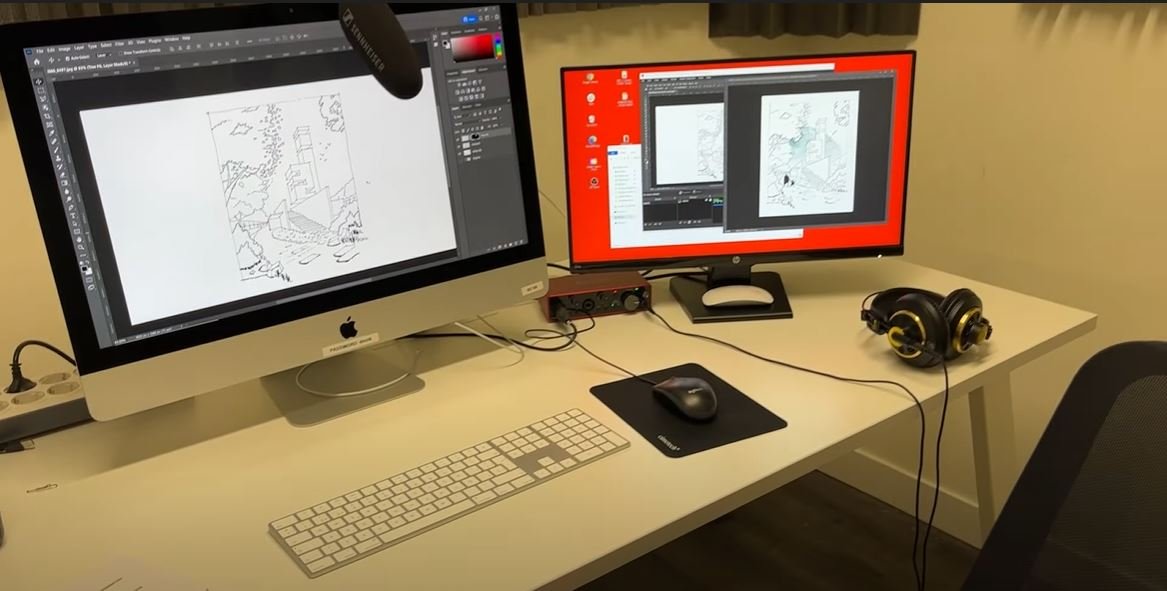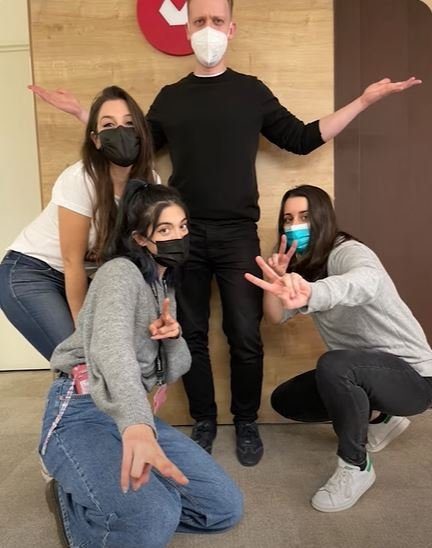Behind The Scenes: The Making of an Online Course with Domestika
HOW does A team of professionals create AN ONLINE COURSE?
If you ever wondered how Domestika works, how they create their online courses, how they pay the teachers, and just generally what it takes to create & produce an online course on Domestika. Well, you’ll learn all this in this article, as you get to peek behind the curtain through the lens of my first teaching experience at Domestika.
Introduction : What is Domestika?
If you’ve never heard of Domestika before, it’s like a behemoth of a course-creation factory. Currently, it is the fastest-growing online course platform and marketplace for creatives, with millions of fans worldwide, publishing hundreds of new courses every year.
BUT there is also something that makes it special and different from most other similar platforms.
Curious? Here’s how it’s different…
First of all, Domestika very carefully curates the content as well as the teacher roster. Teachers can be only invited to the platform.
Second, teams at Domestika produce their courses themselves - in-house - in 4 different studios across the world, to ensure the highest content & production quality possible.
Main Shooting Set | Filming studios in Madrid, Spain.
What’s It Like To Be A Teacher
I received an invitation from an acquisition manager back in mid-November 2021. That is also when you - as a teacher - get to discuss the details of your contract as well as the payment - the advance fee (we will talk more about that later).
I have been a solo creator for 4 years now and I’ve been used to do everything by myself. That being said, to produce an online course, I would be the only one who does everything - planning, scripting, lighting, shooting, recording b-roll, editing, publishing, and marketing (solo-creators wear a lot of hats).
But working with Domestika is a totally different experience!
As a teacher, you work very closely with a core team of :
Content curator
Production manager
Filmmaker
Assistant filmmaker
To be honest, it is kind of a big deal to work with these specialized professionals who assist you in producing your online course!
You can certainly tell that Domestika invests a lot of effort and money into their teachers before they even start producing the course.
Process of Making An Online Course
After the first point of contact, we spent the first few months coming up with the topic, developing the curriculum, and final structure of the course content. At the same time, we write bullet points or scripts for the talking, and final project, finetuning everything, and prepare all the additional material that students can download in the course.
In my case, it’s a lot of illustrations, diagrams, printable worksheets for practicing as well as my full library of hand-sketched Photoshop brushes that we use in the final project.
When I first arrived, I was in awe as the shooting set is pretty much like a small movie production!
The studio set includes :
multiple cameras (usually 3-4, the over-head camera is shooting even in 6k resolution so they can crop the footage as they need in editing)
professional lighting
professional sound
A production team - production manager, filmmaker & assistant filmmaker (there are more people coming in and out, but these 3 are all there during the whole shoot)
The production team members behind the scene.
How Long Does The Filming Take?
To answer that, let me share a funny story with my mom:
I was talking to her on the phone and telling her about the trip to Madrid to film the online course.
I remember she asked, how long is the course gonna be eventually?
I said, well, it should be around 2-3 hours in the end.
And she goes, so what are you gonna be doing there the whole week?
Have the same doubt? I hear you, let me explain…
My course is called Architectural Drawing: From Paper to Photoshop. So basically, the first half of the course is focused on analog hand-drawing techniques and putting your ideas on paper.
While the other half is all about going digital and taking those hand-drawn sketches to another level by post-processing them and creating your own visual style in Photoshop - and this is the part that is recorded in the screencast room.
Recording in the screencast room.
During the filming week, we spent the first 3 days shooting the course content in the studio sets. This includes shooting the trailer, all the video lessons, b-roll (secondary footage for visual support), photoshoots and extra filming for the social media team. Then I spent the next 2 days in the screencast room recording the whole digital part of the course.
The production week, in my experience, was 5 full jam-packed days, Monday through Friday, of intensive (and exciting) work.
How Teachers Are Paid?
Of course, I’m not allowed to discuss any exact amounts, but I can tell that there are 3 types of payments that teachers can be eligible for (as of the beginning of 2022):
Advance fee: Usually, within a month from the production phase being over, teachers get paid the advance fee that were agreed on in the beginning when discussing the contract. Once the course is published and students start enrolling, teachers are basically earning back their advance fee.
Royalties: Once the course earns the amount of the advance, teachers start to get paid royalties from any new enrollments.
Affiliates: Some teachers are eligible to become Domestika affiliate partners. As an affiliate partner, I can recommend other people’s courses on the platform and when someone makes a purchase through my unique affiliate link, I get a small percentage from the sale without any extra costs to the students.
Basically, I am rewarded for recommending Domestika courses and bringing more people to the platform. To try this in action, you can check out the selection of most popular Domestika courses related to architecture and drawing here :
The Pros & Cons of Working With Domestika
The WORST part? This is gonna sound silly but... quite at the beginning, you as a teacher are asked to submit reference photos for the set - for the builder team to take inspiration from when custom building the shooting sets.
And there’s one more thing you need to submit - your wardrobe (2 different outfits to be specific) to make sure it fits nicely together with the set. Also, it’s important to make sure there’s enough contrast so that you don’t blend in with the background, and the outfit doesn’t include any small patterns that would cause trouble to the cameras (like moiré).
Going clothes shopping after almost 2 years of the pandemic, when I didn’t have anything solid that I could wear, was the worst for me.
But the BEST part?
Honestly, it is the whole production week in Madrid and the people I got to work with.
Because I’m based in Prague, Czech Republic, the closest studio for me was in Madrid, Spain. And Domestika generously covers the airfare & other travel expenses for teachers as well as the hotel and partly even the food.
Moreover, the team was super professional, very committed to the process, and working hard to make the best possible course and actually to make me look good.
Me and the production team (from left: Fernanda, Violeta, Allison).
Hands down this is such a fantastic, fantastic experience! Very grateful for it!
Now that you know almost everything about the process here’s the final result - watch the trailer below:
… and of course, if you are a designer, architect, illustrator, or hobby sketcher, this online course has been CREATED FOR YOU.
I shared all the ins and outs of my process for putting your ideas on paper in perspective, improving their composition, bringing them to life in Photoshop.
Interested? Click the button below to learn more.
I’ll see you in the next one. Cheers!
Save this pin for future reference! 👇







